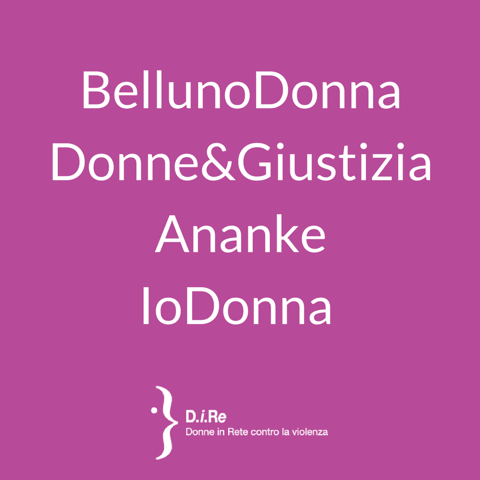 To better understand the functioning of the devices and the exit paths from violence and maltreatment, the network D.i.Re started with the support of Kering Foundation a qualitative research which involves the anti-violence centers of four cities: Belluno, Ancona, Pescara and Brindisi.
To better understand the functioning of the devices and the exit paths from violence and maltreatment, the network D.i.Re started with the support of Kering Foundation a qualitative research which involves the anti-violence centers of four cities: Belluno, Ancona, Pescara and Brindisi.
Every year thousands of women are welcomed by anti-violence centers, and just as many end their recovery path after a traumatic experience. Which tools have worked best? What are the paths that have proved most effective? What can be further improved?
The woman who asks for help is always the center of every action and as such her thought guides the growth and development of anti-violence centers. Often, however, there is no reliable data on what happens to women who conclude their experience and "leave" the centers: we do not know what their opinion is regarding the path followed, what methods and responses were adequate and which were not. In the same way, the problems faced later on are not known, even years after the encounter with an anti-violence center.
The research I'm in there. Effectiveness of the devices and the ways out of violence and maltreatment aims to answer these questions and to better understand the impact over time of the intervention methodologies adopted in the network's anti-violence centers D.i.Re.
Starting from some researches already conducted by some centers of the network independently, I'm in there is structured as a follow-up research, with the scientific supervision of Prof. Patrizia Romito of the University of Trieste, which investigates practices, expectations, good practices and critical issues with the same tool.
The research started in 2016 and ended in 2018.
The research results are presented in the publication “I am going in. A follow-up study among women who went to four anti-violence centers ", Research report by Federica Bastiani, Scientific supervision by Patrizia Romito, University of Trieste - Laboratory of Social and Community Psychology, which can be downloaded here.
